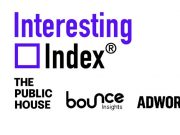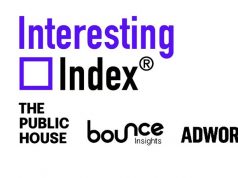Increasingly, consumers are being confronted by social media platforms with new paid-for-subscription offerings, often in return for an ad-free experience. But who is likely to pay, asks Hannah-Louise Dunne and Shane Foley, social strategy directors, Core?
For a medium that introduced the concept of liking and sharing to the market, social is set to put consumers’ love for the various platforms to the ultimate test with confirmation that Meta is introducing a paid-for subscription model to the market.
Long rumoured to be on the horizon, reports earlier this year revealed that Meta, TikTok and X (the platform formerly known as Twitter) were working on a new paid-for-subscription model service.
While X is trialling its service in New Zealand and the Philippines, Meta announced on October 30th that they will be introducing an ad-free paid-for service to the EU market, EEA and Switzerland.
So what exactly will happen, and what impact will this have for consumers and for the marketing industry at large?
Meta’s Plans
The announcement of the Meta plans comes in a year where we have seen a significant evolution in the digital eco-system around data privacy, and the latest in a series of European tech regulations aimed at protecting consumer rights specifically in the social space.
With the approach to legislating across the digital space growing ever more divided between Europe and the US, a number of key events have preceded this latest announcement.
In May, Meta was fined a record €1.2 billion by the Irish Data Protection Commission for breaching the EU’s GDPR legislation.
While in July, Meta’s new text-based app – and potential rival to X(Twitter) – Threads was launched in the UK and the US, but not in the EU, with a Meta spokesperson telling The Verge it was due to “upcoming regulatory uncertainty,” which many believe to be linked to the EU’s Digital Markets Act.
Latest reports now indicate Meta is facing a Europe-wide behavioural advertising ban. Meta’s greatest selling point to advertisers has long been its ability to deliver targeted ads based on user behaviours on and off their social platforms. However, with this move, the platform will be handing over more control to the user.
Those who choose to pay the monthly subscription will now use Facebook and Instagram without advertising, or continue to use these platforms for free while seeing ads that are relevant to them.
The introduction of a subscription ad-free model in Europe seems to be a tactical manoeuvre designed to capture user consent to continue running personalised advertising campaigns to reach potential customers in Europe.
In its announcement to the market, Meta has stated “Whether people choose to use our products for free with ads or subscribe to stop seeing ads, we are committed to keeping people’s information private and secure, under our own policies as well as the EU’s General Data Protection Regulation (GDPR).”
Will Irish people opt for a paid-for-model?
For the moment, Irish people, are in the majority, in favour of Instagram and Facebook remaining free.
Research conducted by Core Research in October 2023 revealed that 62% of people surveyed believe that Facebook should remain free, while 67% cite the same appetite for Instagram remaining as a free service, with ads continuing to run.
A majority vote in favour of continuing in a business-as-usual manner, it nonetheless reveals that over one-third of consumers are willing to pay for an ad-free version of the respective Meta platforms.
This is the interesting part.
While subscription will is being charged just under €10 for use on desktop and up to €12.99 across iOS and Android , Irish audiences are in favour of a lower cost-point, with 38% willing to pay under €2 for use of Instagram and Facebook in an ad-free context.
Of the number surveyed, only 2% are willing to pay more than €10, suggesting that this option will only appeal to a small number of consumers who prefer an ad-free experience across their digital media landscape.
What will the impact be?
Overall, this is the latest change in a year which saw social undergo some of its most seismic shifts yet. Along with the introduction of paid-for-social, we have seen a huge move towards vertical video across social – prompted by the introduction of TikTok – and a preference from consumers to consume content publicly, but to share and comment on it in more private spaces like DMs (direct messages) or group messaging apps.
With that in mind, this introduction is likely not to have a huge impact just yet.
But it does offer food for thought and illustrates both Meta’s interest in working to meet the spirit of EU’s data legislation, whilst also staying true to its spirit of supporting an ad-funded internet and platform.
In the latest earning figures published by Meta, the company’s revenue, operating margin and monthly active users are all increasing this year compared to 2022, but regulations and shifting market norms will make it increasingly challenging for brands to target their audience across the platform.
Social media has long stood out as a unique, highly targeted and data driven media landscape. However, in this ever-evolving space, change is now being accelerated by European regulation, which means social media is staring to conform to the rules of established linear media channels.
As the landscape, behaviours and rules change, advertisers on both digital and linear media channels must adapt, innovate, and embrace new approaches.
Not only do we welcome further protection for the consumer, we must also put time and effort to ensure we design strategies and approaches that will meet the needs of consumers and business objectives in this newly evolved space.
Attention will become of even more paramount importance, as will designing content that not only stops consumers mid-scroll, but is genuinely entertaining, relevant or informative enough to make an impact in these more controlled environments that consumers connect within – such as group messages, DMs and indeed, the small cohort who will opt for an ad-free social feed.






















